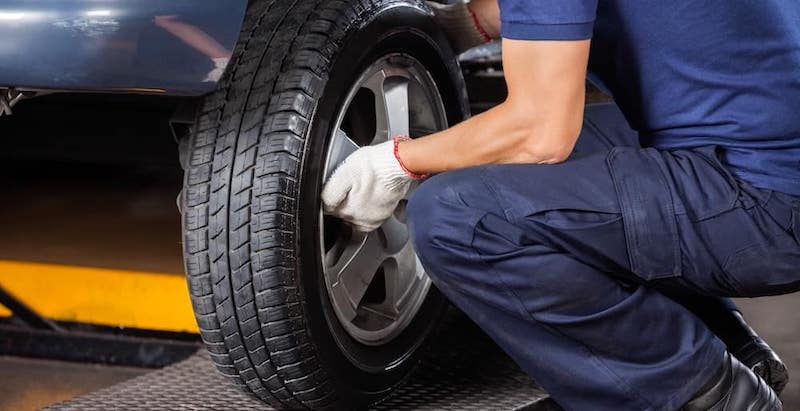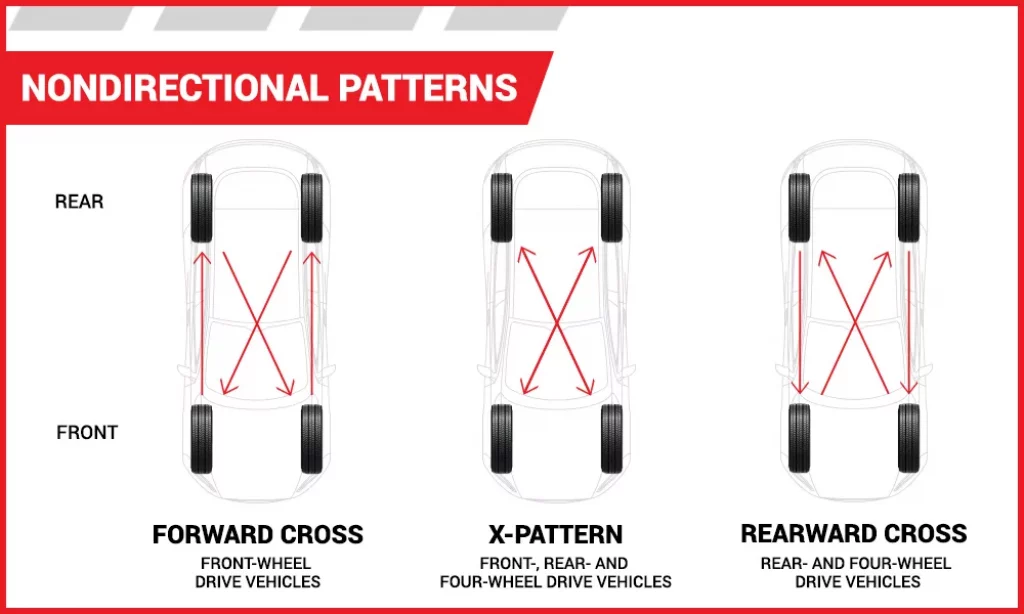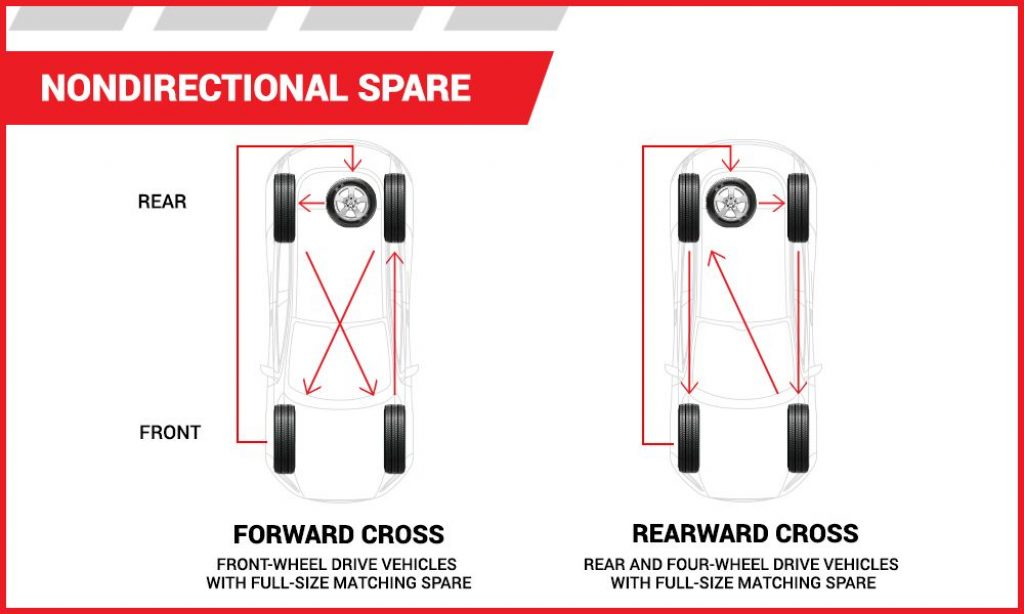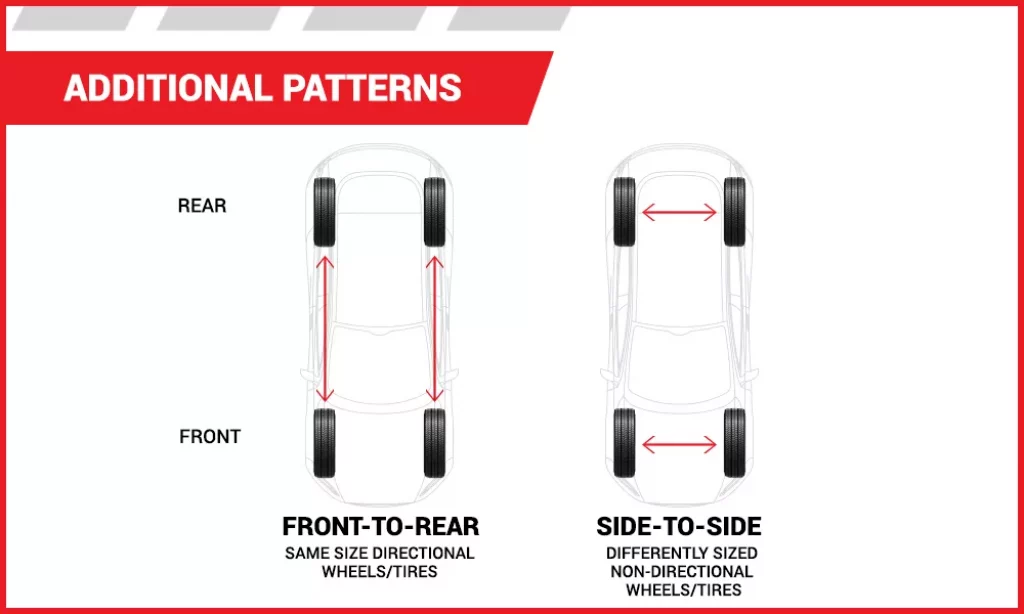How Often Should You Rotate Tires? (Patterns Included)

You don’t think about rotating your tires until it’s too late and something goes wrong. Then you have to take it to a mechanic and spend extra money that you didn’t plan on spending.
After: Routine tire rotation is an important part of car maintenance that often gets overlooked. By rotating your tires every 4,000 miles or every six months, you can extend their lifespan and prevent expensive damage down the road. Plus, it’s a quick and easy process that anyone can do at home.
What is Tire Rotation?
Tire rotation is when you switch the position of your tires on your car. You can do this by switching them from front to back, from left to right, diagonally or in other ways. Different patterns for tire rotation are called “tire rotation patterns.”
Why Rotating Your Tires Matters
Consider tire replacement as any other kind of routine or preventative maintenance for your vehicle, such as an oil change or an alignment check.
Did you know that your vehicle’s tires wear differently? Although it may seem like each tire wears the same as you’re driving along every day, many factors contribute to uneven wear. For example, one little-known fact is that your front tires typically carry more than 60 percent of your vehicle’s weight, causing them to wear down faster than your rear tires. The simple act of turning your vehicle right or left also contributes to uneven wear.
You also need to consider whether your vehicle is a front-wheel drive, rear-wheel drive, all-wheel drive or four-wheel drive. Each performance mechanism causes the vehicle’s tires to wear differently. The tasks you ask your vehicle to perform every day — whether you’re ascending mountains, sitting in stop-and-go traffic or cruising for hundreds of miles on the freeway — contribute greatly to how your tires wear.
After thousands of miles of driving, no matter how you ask your vehicle to perform, some wear is inevitable. Rotating the position of your tires on your vehicle equalizes these natural wear patterns, helping ensure a smoother, safer ride for you and your family.
And if safety doesn’t reason enough for you to commit to regular tire rotation, perhaps money is. We all know that tires aren’t cheap. When you habitually rotate your tires, you’re balancing out your tread, which will save you big money on tire replacement in the long run. Most tire warranties require regular tire rotation to keep the warranty valid, so this simple maintenance will keep you worry-free in that regard.
How Often Should You Rotate Your Tires?
When considering when to rotate your tires, you’ll hear different numbers from different people, but a good rule of thumb to abide by is every 3,000 to 5,000 miles every six months — even if there are no visible signs of wear. Of course, you can never go wrong by following the recommended rotation intervals listed in your vehicle’s owner’s manual.
Treat regular tire rotation as preventative maintenance, and get it done every time you’re in for an oil change. So, seize the moment and save yourself some time, hassle, and money (in the long run).
How to Rotate Tires By Yourself
If you’re feeling super ambitious — or if you don’t want to spend the extra money to have a professional rotate your tires for you — it’s always possible to do it yourself. Keep in mind that you will need at least 20 minutes and that you’ll have to invest in a good car jack and jack stands if you don’t already own them.
Once you’ve determined the correct rotation pattern for your vehicle (see the next section), rotating your own tires is more a matter of time and physical ability than anything else. Here’s a very high-level how-to guide for you to follow:
- Make sure your car is parked on a level surface.
- Engage the parking brake to ensure your safety.
- Next, loosen the lug nuts on all of your wheels, but don’t remove them completely.
- Then use your car jack to elevate one wheel, place a jack stand under it and remove the tire.
Follow this sequence with each of the other tires and rearrange them according to the best rotation pattern for your vehicle. Finally, carefully follow the steps above in reverse order.
What is the Correct Tire Rotation Pattern for My Vehicle?
The number of tire rotation patterns can be confusing and overwhelming, so make sure to consider where you’ll be moving each tire before you decide to take on the task of rotating them yourself.
Your specific rotation pattern depends on whether you have:
- directional or non-directional tires;
- staggered fitment (differently sized) tires;
- a full-size or mini spare tire;
- and front-wheel, rear-wheel, four-wheel or all-wheel drive.
If you’re unsure of what pattern to use, be sure to check your vehicle’s owner’s manual or the industry standards for your vehicle.
Uniform Size And Non-Directional Tires

Rearward Cross
If you have a car that is 4-wheel, all-wheel, or rear-wheel drive, the scheme is the rearward cross. This means that you keep the rear tires on the same side of the vehicle as they were before, but move the front tires to opposite sides of the rear axle.
X-Pattern
Will work best for the front-wheel drive vehicles such as sedans and light-weight trucks. Because all tires are moved diagonally, this means that they are switched from one axle to the opposite as well as relocated from one side of the vehicle to the other.
Forward Cross
This is the most frequent pattern for front-wheel drive cars. The front axle tires are brought straight back while the rear wheels are shifted diagonally to the other side of the front axle.
Uniform Size Tires And Non-Directional With A Full-Size Spare Tire

In order to ensure that all of the tires on your car have uniform tread wear, you should rotate your full-size spare tire with the other four. This is particularly important for all-wheel or 4-wheel drive cars, where even minor variances may put a lot of strain on the vehicle’s drive system.
Rearward Cross (Rear-Wheel Or 4-Wheel Drive Vehicles)
The rear axle has two tires that move straight to the front axle. The other tire moves to the right side of the rear axle. The front right tire moves diagonally back to the left side of the rear axle, and the front left tire becomes your new spare tire.
Forward Cross (Front-Wheel Drive Vehicles)
The rear tires are moved to the opposite sides of the car. The right front tire becomes the new spare tire. The spare tire is put on the right side of the car. The left front tire is moved to the back of the car in the same spot as the old left rear tire.
High Performance And Directional Tires

Side-To-Side
(For Differently-Sized Performance Tires On The Front And Rear Axles)
Tires are switched with their equal counterpart, and they remain on the same axle. With regard to the two rear tires, they swap places with one other while doing the same thing for the two front tires.
Front-To-Back
(For Directional Tires)
Tires are switched from one axle to the other, but they stay on the same side of the car. The front left tire is transferred to the rear axle and the rear left tire is changed places on the left side of the front axle as an example.






